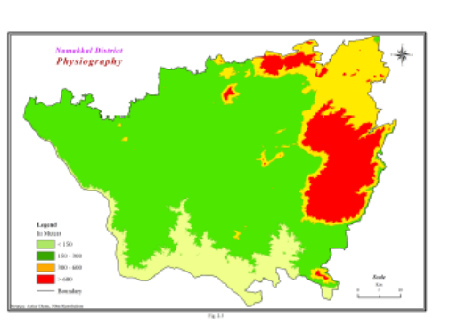
Geo-Eye
Department of Geography & GIS

Department of Geography & GIS

Geo-Eye
Year: 2021, Volume: 10, Issue: 1, Pages: 13-21
Review Article
S Vinothkanna1*, V Emayavaramban1, A P Ramaraj2, K Senthilraja3
1Department of Geography, School of Earth and Atmospheric Sciences, Madurai Kamaraj University, Tamil, Nadu - 625021, Madurai, India
2International Crops Research Institute for the Semiarid Tropics, Telengana, 502 324, Patancheru, Hyderabad, India
3National Institute of Agricultural Extension Management, Telangana, 500 030, Rajendranagar, Hyderabad, India
*Corresponding Author
Email: *[email protected]
Received Date:22 March 2021, Accepted Date:19 May 2021
Drought has long been recognized as one of the major causes of human distress and is a natural disaster that claims so many fatalities annually. Droughts are a series of climate events that often hit South Asia, causing significant water shortages, economic losses and adverse social consequences. Water scarcity can be said as the cause and effect of drought. It is not possible to avoid droughts. But drought preparedness can be developed and drought impacts can be managed. The success of both depends, amongst the others, on how well the droughts are defined and drought characteristics quantified. Hence, preparedness to drought should form the important part of national environmental policies. The degree of drought preparedness varies considerably from one country to another. Average annual normal rainfall of Namakkal is found to be 678 mm. Among the monsoons, southwest monsoon (SWM) had higher amount of average rainfall followed by northeast monsoon (NEM) rainfall. Annual extreme SPI negative value was found over Tiruchengode as -4.52. Frequency of SPI is maximum of 20 in Namakkal and drought years varied from 3 to 6 annually. Paramathy and Senthamangalam experience a maximum of 8 drought years in SWM. The frequency of negative SPI value is varied from 16 to 21and interestingly no extreme drought events are noted in NEM. The study based on SPI will be helpful for assessing the drought severity. Keywords: Rainfall; SWM; CV; Drought; SPI
© 2021 Vinothkanna et al. This is an open-access article distributed under the terms of the Creative Commons Attribution License, which permits unrestricted use, distribution, and reproduction in any medium, provided the original author and source are credited.
Published By Bangalore University, Bengaluru, Karnataka
Subscribe now for latest articles and news.